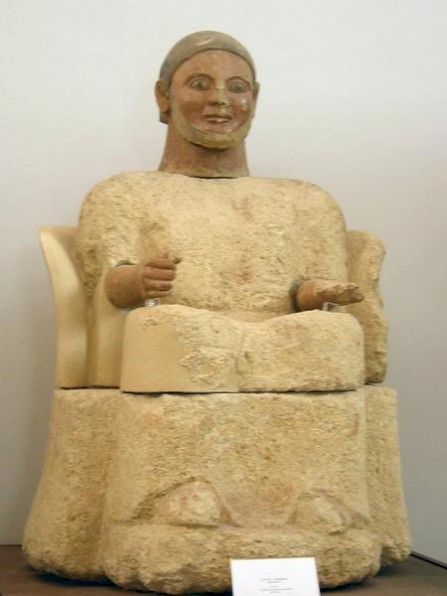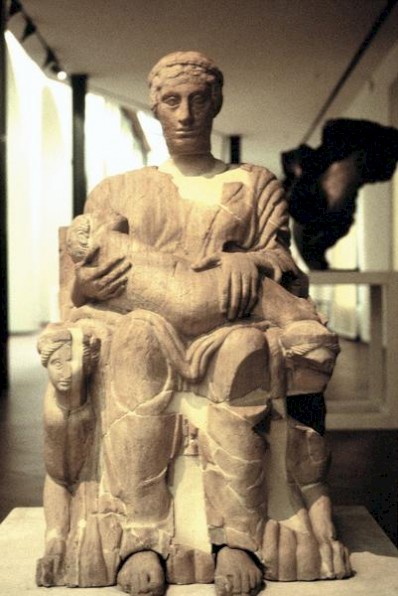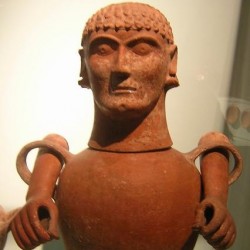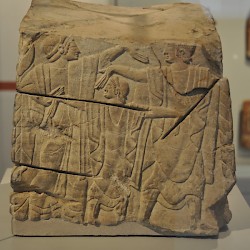Clusium (Chiusi)
Q843729Clusium: Etruscan town, modern Chiusi.

Clusium was one of the cities of the ancient Etruscans, sometimes called Camars ("by bogs surrounded") or Clevsins. The site of the ancient city is now occupied by modern Chiusi, but on many places, ancient tombs can still be seen, and the position of the Archaic necropoles suggests that the inhabitants once lived in small villages spread over a larger area.
The sixth century BCE was Clusium's golden age. The small settlements were abandoned and the people settled in what was to become a real city. The Clusians also sent out a colony, called Padania. This proves that Clusium was by now a really powerful state. A well-known statue from this period, commonly called "Pluto" (although we have in fact no idea who it is meant to represent) shows the high quality of the Etruscan art of this age. A famous import is the François Vase.
This political and cultural flourishing is usually connected to the reign of a king named Lars Porsenna. He is a problematic figure. Whoever he may have been, he can never have been a king, because porsenna renders the title purthne, which is the Etruscan word for supreme magistrate. Writing half a millennium later, the Roman author Livy mentions that king Lars Porsenna was an ally of the Roman king Tarquin the Proud and tried to reinstall him after he had been expelled by Brutus. Although Livy tells that Porsenna's siege of Rome met with little success, the Roman historian Tacitus (55-c.120) admits that the city was in fact captured,note while Pliny the Elder knows that one of the peace conditions was "that the Romans were only to use iron for agriculture".note

It is unclear how Rome regained its independence, but there is no need to doubt that it recovered swiftly. By the end of the fifth century, Rome had even embarked upon an aggressive expansionist policy, which resulted in the capture of the southern Etruscan city of Veii. Now, the territories of Clusium and Rome were separated by Volsinii only, and it comes as no surprise that the two towns had close ties. In 387 BCE (=390 VC), Roman diplomats went to Clusium to speak with the Gauls who were to defeat Rome at the Allia.
It is not known when Clusium was subjected to Rome - according to Livy, it was still unconquered in the year of the battle of Sentinum (295) - but it had the rank of socius (ally) when the First Punic War broke out in 264 BCE. The city, which had a reputation for its pines and vines,note must have been a normal Italian town after this, benefitting from its position along the Via Cassia. The city was still of some importance in the sixth century; it is mentioned by Procopius as an important citadel taken by Belisarius.note
 Etruscan urn |
 Clusium, Etruscan relief with dancers |